- The Magazine
- Stay Curious
- The Sciences
- Environment
- Planet Earth

Will Aliens Understand Voyager's Golden Record?
Could an alien observer truly understand the messages we have sent to the stars.
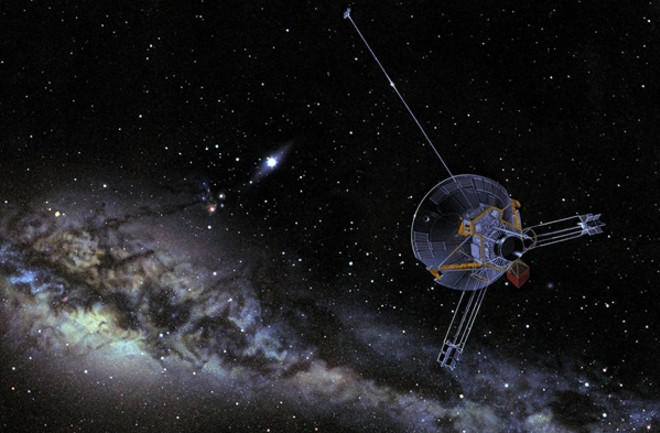
The Pioneer and Voyager spacecraft famously contain messages to anyone who might someday find them. Both Pioneers carry a plaque, while the Voyagers carry a phonograph record. An enormous amount of effort went into creating these objects, but could an alien observer truly understand the messages we have sent to the stars?
While we cannot take anything for granted when it comes to how these messages might or might not be interpreted, let’s assume that the beings who might find the spacecraft can at least see or hear with eyes or ears similar to our own. Each message was designed with not only the information it was to carry in mind, but also the means to establish understanding through common denominators found throughout the universe.
The Pioneer Plaque
Pioneer 10 and 11 each carry a 6 x 9-inch (15 x 23 centimeters), gold-anodized aluminum plaque. The plaque is affixed to support struts close to the spacecraft’s bus (main body). Carl Sagan and Frank Drake played key roles in designing the plaque and Linda Salzman Sagan, Sagan’s wife at the time, was the artist who actually drew the images engraved on the plaque.
The most striking feature of the plaque are the figures of the man and the woman overlying the silhouette of the Pioneer spacecraft itself. While this does clearly convey our physical size and shape, as well as that sexual dimorphism is present in humans, the facial features of the couple have little detail and the sort of sensory organs are being depicted (the couple’s ears are barely shown at all) might be unclear. The man and woman both have their mouths closed, and viewers might not understand that these are even mouths at all. Given how the image is drawn, an observer could also be forgiven for not understanding that both the male and female have hair on their heads.
The couple both have a bland expression (which may have been an attempt to avoid anything that could be interpreted as hostile) and the man is seen raising his right hand with the palm facing the viewer. While this gesture clearly conveys a greeting when viewed by another human, an extraterrestrial may have no way of interpreting this gesture. (Could you interpret a gesture made by an antelope … or a praying mantis?) It does show, however, that humans have opposable thumbs, as well as the general range of motion of the upper limbs.
With regards to the scientific data presented, the top left of the plaque shows the hyperfine transition of neutral hydrogen as a means of conveying to the reader baseline units of time (0.7 nanoseconds, the frequency of the transition) and distance (21 cm, the wavelength of the light released by the transition). If one is able to deduce that the image is that of hydrogen, the time and distance should be understandable.
The plaque also contains a map of our sun relative to 14 pulsars as well as the center of our galaxy, conveying both the distances to the pulsars and their frequency in binary notation. As this image conveys copious objective data, a spacefaring species might well be able to easily interpret it.
Finally, the plaque contains a map of the solar system. The solar system map is likely among the more easily interpreted parts of the plaque, with Pioneer shown to have originated from the third planet. The plaque was created at a time when Pluto was still considered the ninth planet (before the discovery of other trans-Neptunian dwarf planets such as Eris and Sedna, among others), but it would still direct the reader’s attention to Earth if they were able to figure out that our solar system was the one depicted.
Voyager’s Golden Record
The Voyager record asks more of whoever finds it but gives more information in return. These phonographs, attached to the spacecraft bus, feature a cover illustration and over 90 minutes of audio on the reverse side. The cover illustration features the same image of hydrogen and the same pulsar map as found on the Pioneer plaque. Of critical importance, the Voyager records convey instructions on how to play them, such as how to affix the attached stylus, at what rate of rotation the record must be spun, and the proper waveform of signals generated by the record. It also explicitly tells the reader how to know if they are viewing the images properly via an engraving of what the first image (a circle) should look like. While this may seem very daunting, the challenge is primarily technical and might well be easily overcome by an advanced spacefaring species.
An alien species might well find more difficulty in interpreting the audio samples, music, and images contained on the record. There are over 50 greeting messages in different languages. While the specifics of the messages are likely to be uninterpretable, they would at least convey to the listener the diversity of the creatures who created the Voyagers.
Similarly, the musical selections chosen demonstrate a wide range of human musical styles (ranging from works of Beethoven and Stravinsky to those of Chuck Berry, among others). While the lyrics of “Johnny B. Goode” are probably gibberish to an extraterrestrial, the beat and rhythm of the song would convey a tremendous amount to an alien listener.
Of perhaps the greatest importance are the 115 images encoded on the record. The first six images, if decoded properly, provide immense technical data for the reader regarding mathematical definitions, scales and sizes, as well as additional information regarding our location and how to find us. Images of the sun and its spectrum, as well as some of the planets in our solar system, could help the discoverer of the Voyagers to find us should they decide to pay the Earth a visit. There are also approximately 20 medical and scientific diagrams including the structure of DNA and detailed images of human anatomy. These images could likely be interpreted correctly given their concrete nature.
The Voyager record also contains a plethora of images of humans engaged in a variety of activities (including eating, looking through a microscope, and even going on a spacewalk). While many of these images would be hard to interpret (e.g., a picture of a woman licking an ice cream cone or a photo of a string quartet) the images would at least convey that humans have created a complex civilization with some degree of advanced technology.
The Big Picture
As Marshall McLuhan famously said, “The medium is the message.” While the recipients of the Pioneer plaque or the Voyager record might never understand everything we are trying to convey, the fact that these messages were placed on interstellar spacecraft carry (both for them and for us) a deeper message — that humans created these spacecraft and that we want to tell the universe who we are.
- extraterrestrial life
- space exploration
Already a subscriber?
Register or Log In

Keep reading for as low as $1.99!
Sign up for our weekly science updates.
Save up to 40% off the cover price when you subscribe to Discover magazine.
The Message Voyager 1 Carries for Alien Civilizations
The "Golden Record" aboard the interstellar spacecraft is a time capsule of humanity, sent from 1977 to the distant future.

The year was 1977. Jimmy Carter was president. Rod Stewart topped the Billboard chart with " Tonight's the Night (Gonna Be Alright) ." The economy was recovering from recession. Oil was scarce. Ties may have been wide , but patience, among many, was thin. Into that turbulent and indolent and somewhat cynical world -- and on behalf of it -- NASA launched two little probes, tiny even by spaceship standards, from Cape Canaveral. Voyager 1 and its twin, Voyager 2, were initially meant to explore Jupiter, Saturn, and their moons. They did that. But then they kept going. And going. And going. At a rate of 35,000 miles per hour . One of them, almost 35 years to the day after it left Earth behind, finally ventured beyond the influence of the body that has defined so much of life on Earth: the sun .
The Voyager probes are technically unmanned; in another sense, however, they carry all of humanity with them as they speed through space. Each craft bears an object that is, in every way, a record -- of Earth, of humanity, of humanity's drive to reach and strive and dream and connect. The two epic mementos, given the sunny hue of their aluminum coverings, have been dubbed the Golden Records . They were the product of Carl Sagan and a team that, in January 1977, realized the far-traveling probes would stand a better chance than most human spacecraft would of encountering extraterrestrial life. So they decided to undertake a task that was both uniquely human and uniquely of its moment: They would make a record that would, if discovered by aliens, represent humanity. They would make a time capsule of human civilization. One that would, as NASA puts it , "communicate a story of our world to extraterrestrials." An artifact that would be epic and Quixotic in equal measure.
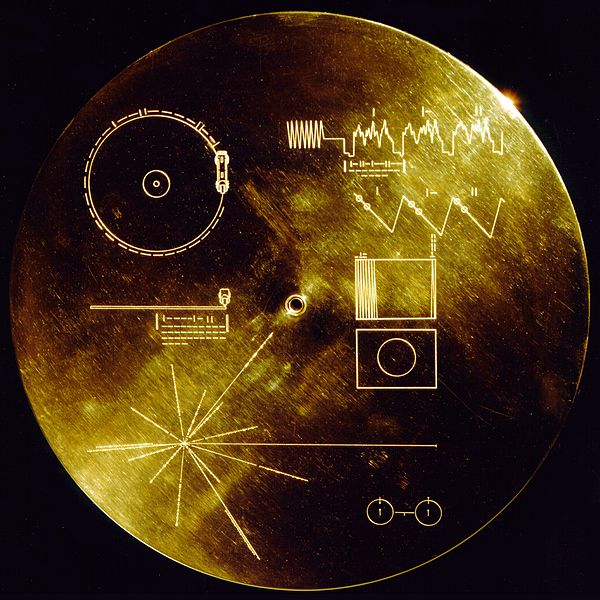
So how would a notional extraterrestrial, encountering this sweeping record of human existence, actually play it? Like you'd play any record . (NASA apparently assumed that alien civilizations, should they be sufficiently advanced, would be familiar with vinyl. Which is fair.) Each Golden Record is encased in a protective aluminum jacket, along with a cartridge and, yep, a needle. And both include instructions -- in the symbolic language you can see etched in the image above -- that both explain the origin of the Voyager crafts and indicate how the record is meant to be played. (Ideally, NASA explains , the record is played at 16-2/3 revolutions per minute.) The logic of all this is simple: It will be tens of thousands of years (if ever) before either Voyager can make a close approach to any planetary system that lies beyond our own. "The spacecraft," Carl Sagan put it , "will be encountered and the record played only if there are advanced spacefaring civilizations in interstellar space."
He added: "But the launching of this bottle into the cosmic ocean says something very hopeful about life on this planet."
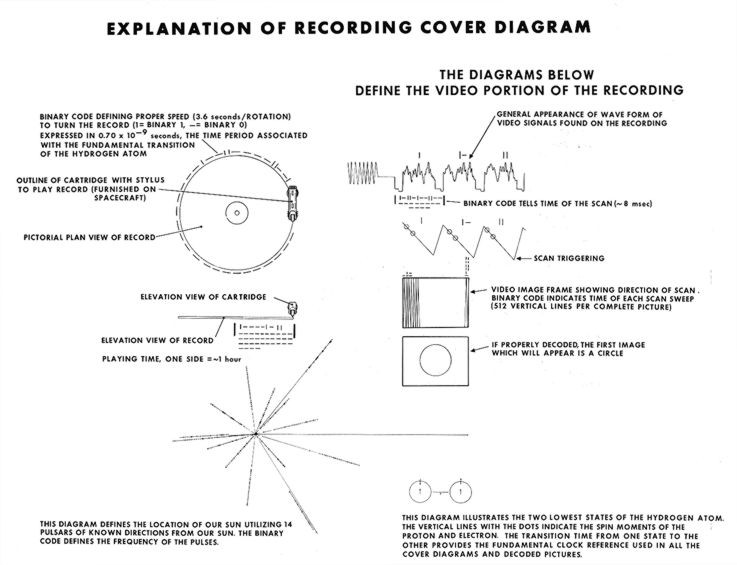
- Skip to main content
- Keyboard shortcuts for audio player
What Would Aliens Make Of NASA's Voyager?

Christopher Joyce

Bill McQuay
Forty years ago, NASA sent two spacecraft into space with images and recordings from Earth. To test whether aliens would be able to hear them, scientists ran the messages by animals, as proxies.
Copyright © 2017 NPR. All rights reserved. Visit our website terms of use and permissions pages at www.npr.org for further information.
NPR transcripts are created on a rush deadline by an NPR contractor. This text may not be in its final form and may be updated or revised in the future. Accuracy and availability may vary. The authoritative record of NPR’s programming is the audio record.
The 116 photos NASA picked to explain our world to aliens
by Joss Fong

If any intelligent life in our galaxy intercepts the Voyager spacecraft, if they evolved the sense of vision, and if they can decode the instructions provided, these 116 images are all they will know about our species and our planet, which by then could be long gone:
When Voyager 1 and Voyager 2 launched into space in 1977, their mission was to explore the outer solar system, and over the following decade, they did so admirably.
With an 8-track tape memory system and onboard computers that are thousands of times weaker than the phone in your pocket, the two spacecraft sent back an immense amount of imagery and information about the four gas giants, Jupiter, Saturn, Uranus, and Neptune.
But NASA knew that after the planetary tour was complete, the Voyagers would remain on a trajectory toward interstellar space, having gained enough velocity from Jupiter's gravity to eventually escape the grasp of the sun. Since they will orbit the Milky Way for the foreseeable future, the Voyagers should carry a message from their maker, NASA scientists decided.
The Voyager team tapped famous astronomer and science popularizer Carl Sagan to compose that message. Sagan's committee chose a copper phonograph LP as their medium, and over the course of six weeks they produced the "Golden Record": a collection of sounds and images that will probably outlast all human artifacts on Earth.
How would aliens know what to do with the Golden Record?
The records are mounted on the outside of Voyager 1 and Voyager 2 and protected by an aluminum case. Etched on the cover of that case are symbols explaining how to decode the record. Put yourself in an extraterrestrial's shoes and try to guess what the etchings seek to communicate. Stumped? Hover over or click on the yellow circles for the intended meaning of these interstellar brain teasers:

What else is on the Golden Record?
Any aliens who come across the Golden Record are in for a treat. It contains:
- 116 images encoded in analog form depicting scientific knowledge, human anatomy, human endeavors, and the terrestrial environment. (These images appear in color in the video above, but on the record, all but 20 are black and white.)
- Spoken greetings in more than 50 languages.
- A compilation of sounds from Earth.
- Nearly 90 minutes of music from around the world. Notably missing are the Beatles, who reportedly wanted to contribute "Here Comes the Sun" but couldn't secure permission from their record company. For the video above, I chose to include "Dark Was the Night" by Blind Willie Johnson, a 1927 track Sagan described as "haunting and expressive of a kind of cosmic loneliness."
The committee also made space for a message from the president of the United States:

Where are they now?
Incredibly, Voyager 1 and Voyager 2 are still communicating with Earth — they aren't expected to lose power until the 2020s. That's how NASA knew that Voyager 1 became the first ever spacecraft to enter interstellar space in 2012: The probe detected high-density plasma characteristic of the space beyond the heliosphere (the bubble of solar wind created by the sun).
Voyager 2 is currently traveling through the outer layers of the heliosphere. It's moving southward relative to Earth's orbit, while Voyager 1 is moving northward. In more than 40,000 years, they will each pass closer to another star than they are to our sun. (Or, more accurately, stars will pass by them).
There are three other spacecraft headed toward interstellar space; two of them, Pioneer 10 and Pioneer 11, are shown in this somewhat dated illustration:
NASA launched Pioneer 10 and 11 in 1972 and 1973, and has since lost communication with both. They aren't traveling as fast as the Voyagers, but they will eventually enter interstellar space as well.
They too, carry a message for extraterrestrial life, in the form of a 6-by-9-inch gold-anodized aluminum plaque, designed by Sagan and other members of the team that would go on to create the Voyager Golden Record five years later.

Like the Golden Record, the plaque features the pulsar map, uses hydrogen to define the binary units, and depicts humankind. NASA faced a backlash for the nudity of the human figures.
Another interstellar message
The fifth probe that will exit our solar system is New Horizons , the spacecraft that flew by Pluto in 2015. It is headed in a broadly similar direction as Voyager 2, but having launched in 2006, it's many years behind. It may not reach interstellar space for another 30 years.
New Horizons was sent into space without any message like the Golden Record, but it's not too late to add one. A group led by Jon Lomberg , a member of Sagan's Golden Record team, is trying to convince NASA to upload a crowdsourced message to the probe for any intelligent life that might come across it.
The spacecraft's memory system is similar to a flash drive, and it wouldn't be as durable as the copper records on Voyager. "The most conservative estimates are a lifetime of a few decades. Other physicists and engineers believe the message might remain for centuries or even millennia," says the website of the message initiative, adding, more hopefully, "Another unknown is the advanced technology possessed by any ETs who find the spacecraft. They might have ways of reading the faded memory we cannot yet imagine."
Most Popular
Mysterious monoliths are appearing across the world. here’s what we know., the supreme court refuses to accept blame for its worst guns decision, why israel acts the way it does, take a mental break with the newest vox crossword, can we be actually normal about birth rates, today, explained.
Understand the world with a daily explainer plus the most compelling stories of the day.
More in Video

Most Americans are wrong about crime

Why China is winning the EV war

How screens actually affect your sleep

Why can’t prices just stay the same?

Why does this forest look like a fingerprint?

How AI tells Israel who to bomb

First presidential debate Q&A with the Vox politics and policy team

What this summer’s age-gap escapist fantasies are missing about romance and middle age

The race to get ahead of the next tornado
NASA's Voyager spacecraft carry golden records loaded with music and photos, to explain our world to aliens
- NASA's been slowly shutting down non-essential instruments on the Voyager 1 and 2 spacecraft to save power.
- Aboard each spacecraft is a golden record, with images, sounds, greetings, and music from Earth.
- The twin probes launched in 1977, on a grand tour of the solar system and interstellar space.

Over the past few decades — and more aggressively in recent years — NASA's been slowly shutting down non-essential instruments on its Voyager spacecraft, to save power. If all goes well, it could stay energized until about 2030. But after that, the spacecraft will likely be on their own, which scientists planned for.
"When the spacecraft don't have enough power to transmit a signal back to us on Earth, they'll continue in the direction they're going, which over hundreds of thousands of years is around the center of the Milky Way Galaxy," Suzanne Dodd, project manager for the Voyager mission at NASA's Jet Propulsion Laboratory, told Insider.
"It's a little piece of the Earth that's traveling out away from us and through our galaxy."
Related stories
When Voyager 1 and 2 launched into space in 1977, each carried on board a golden record — an interstellar collection of human sounds and images meant to represent life on Earth for any alien civilization that might come across it.
Over the decades, the twin probes hurtled through space at a rate of 35,000 miles per hour , sending back detailed views of Jupiter, Saturn, Uranus, Neptune, and their moons. After completing grand tours of our solar system, Voyager 1 and 2 entered interstellar space in 2012 and 2018, respectively. That makes them the most distant human-made objects from Earth.
Mounted on the outside of each spacecraft is an identical gold-plated copper record protected by an aluminum case that, if discovered by aliens, represents humanity. As NASA puts it, the records "communicate a story of our world to extraterrestrials."
Humanity's time capsule
In order to illustrate life on Earth to any aliens that come across it, the golden records contain instructions — using the universal language of math and science we would expect extraterrestrials to have in common with us — on how to extract a trove of sounds, music, images, and diagrams showing human anatomy and humanity's location in the galaxy.
The 115 analog photographs — encoded as audio signals — include a snapshot of a woman licking an ice-cream cone, a man taking a bite out of a sandwich, and a man drinking water, to show how humans eat. The record also includes photos of the Great Barrier Reef, the Taj Mahal, Ansel Adams landscapes, and more.
It contains greetings to prospective otherworldly beings in more than 55 languages and a 12-minute compilation of sounds from Earth, including thunder, the calls of a humpback whale, brainwaves, and a kiss. The cosmic mixtape also has nearly 90 minutes worth of music from around the world, ranging from Chuck Berry's "Johnny B. Goode" to a Navajo chant.
The record includes a copy of a letter penned by Jimmy Carter, who was president when the twin probes launched:
"This is a present from a small distant world, a token of our sounds, our science, our images, our music, our thoughts and our feelings. We are attempting to survive our time so we may live into yours," Carter wrote, adding, "We hope someday, having solved the problems we face, to join a community of galactic civilizations. This record represents our hope and our determination, and our good will in a vast and awesome universe."
This image of woman looking at an X-ray photo of what seems to be her own hand, was included on the golden record. National Astronomy and Ionosphere Center (NAIC)
Making a cosmic mixtape.
Astronomer Carl Sagan, who helped design similar physical messages to send to space aboard the Pioneer 10 and 11 spacecraft, was tapped by NASA to head the creation of Voyager's records. He asked for help curating its contents from science writers Timothy Ferris and Ann Druyan, who recorded her own heartbeat and brainwaves for the record.
"The spacecraft will be encountered and the record played only if there are advanced space-faring civilizations in interstellar space," Sagan wrote, according to NASA . "But the launching of this 'bottle' into the cosmic 'ocean' says something very hopeful about life on this planet."
Watch: What would happen if humans tried to land on Jupiter
- Main content

TwistedSifter
The best of the visual web, sifted, sorted and summarized.
- ARCHITECTURE
- NATURE/SPACE
- SHIRK REPORT
- INFORMATIVE
In 1977 Jimmy Carter Put This Note on the Voyager Spacecraft
by twistedsifter
On September 5, 1977 the Voyager 1 space probe launched from Earth. Nearly 40 years and some 20.5 billion km travelled later (and counting!), the Voyager 1 remains the farthest ever spacecraft from Earth as well as the farthest ever man-made object.
In the event the probe is ever found by intelligent life forms from other planetary systems, a Golden Record containing sounds and images (selected to portray the diversity of life and culture on Earth) can be found on board. You can learn all about the Golden Record here .
In addition, then US President Jimmy Carter penned the following note and placed it in the Voyager 1 space probe to accompany the Golden Record. It remains the only letter in history to reach extrasolar space.
Here’s to galactic civilizations far and wide 🙂
Jimmy Carter’s Voyager 1 Letter
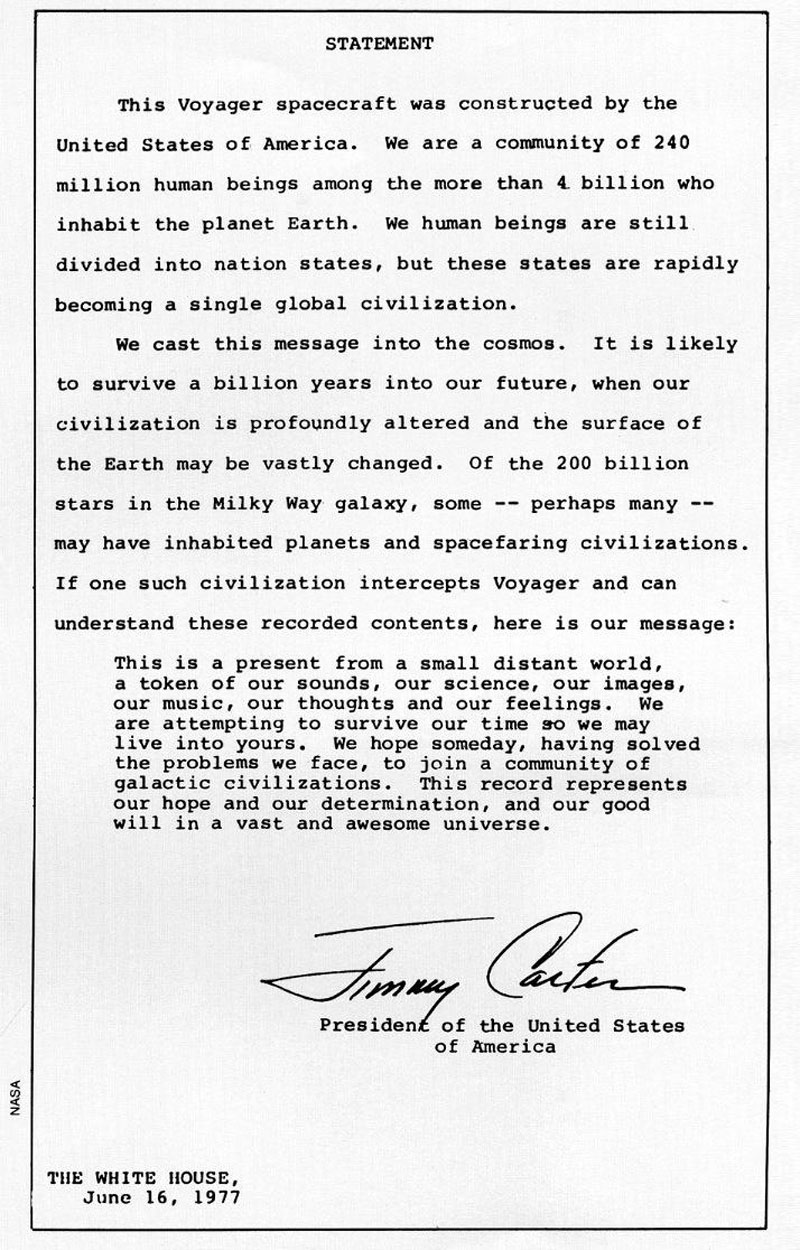
This Voyager spacecraft was constructed by the United States of America. We are a community of 240 million human beings among the more than 4 billion who inhabit the planet Earth. We human beings are still divided into nation states, but these states are rapidly becoming a single global civilization. We cast this message into the cosmos. It is likely to survive a billion years into our future, when our civilization is profoundly altered and the surface of the Earth may be vastly changed. Of the 200 billion stars in the Milky Way galaxy, some–perhaps many–may have inhabited planets and spacefaring civilizations. If one such civilization intercepts Voyager and can understand these recorded contents, here is our message: This is a present from a small distant world, a token of our sounds, our science, our images, our music, our thoughts, and our feelings. We are attempting to survive our time so we may live into yours. We hope someday, having solved the problems we face, to join a community of galactic civilizations. This record represents our hope and our determination, and our good will in a vast and awesome universe.
The Golden Record
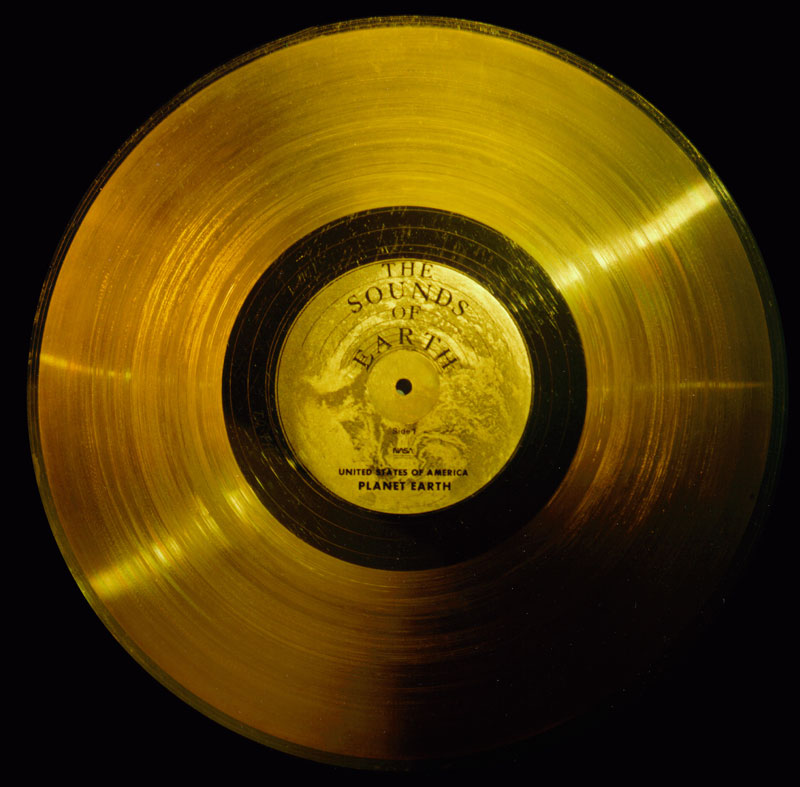
Categories: BEST OF , HISTORY , SCI/TECH , STORIES Tags: · cosmos , farthest , language , letter , NASA , space , top , us president , world record

Sign up to get our BEST stories of the week straight to your inbox.
- PRIVACY POLICY
- Write For Us
- AFFILIATE DISCLOSURE
He Told His Brother His Toys Weren’t For Kids, So He Couldn’t Help Laughing When The Kid Hurt Himself After His Brother Ignored Him

Divorced Dad Is Glad His Son Is Finally Realizing He Can’t Depend On His Mother To Do Everything For Him As An Adult

Neighbors Were Awful And Loud Ever Since They Moved In, So They Decided to Leave Them A Fishy Present When They Moved Out

His Annoying Brother Won’t Help Him Make A Simple Shopping List, So He Decided To Barely Add His Brother’s Items And Make Him Walk 4 Miles To Get More Supplies

Customer Was Getting A Great Deal On Discounted Food, But When A Guy Tried To Bully Him Out Of Saving Money He Got Timely Revenge

HOA Member Complained About A Young Girl’s Pet Bunny, So Her Father Released Wild Bunnies Into The Neighborhood And Havoc Ensued

His In-Laws Want To Use the Kitchen In His Airbnb To Cook On Vacation, But He Says If They Wanted A Kitchen They Should Have Ponied Up The Dough

HOA Issues A Homeowner A Citation For Putting Up Security Cameras, So She Fought Them In Court And Cost Them 16% Of Their Annual Budget

His Unemployed Sister Wants To Go To Disney With His Family, But He Said He’d Only Pay Her Way If She Babysits. Now She Feels He’s Taking Advantage Of Her Situation.

Copyright © 2024 · All Rights Reserved · TwistedSifter
Powered by WordPress VIP · RSS Feed · Log in
March 14, 2024
10 min read
Voyager 1’s Immortal Interstellar Requiem
NASA is reaching across more than 15 billion miles to rescue its malfunctioning Voyager 1 probe—but this hallowed interstellar mission can’t live forever
By Nadia Drake
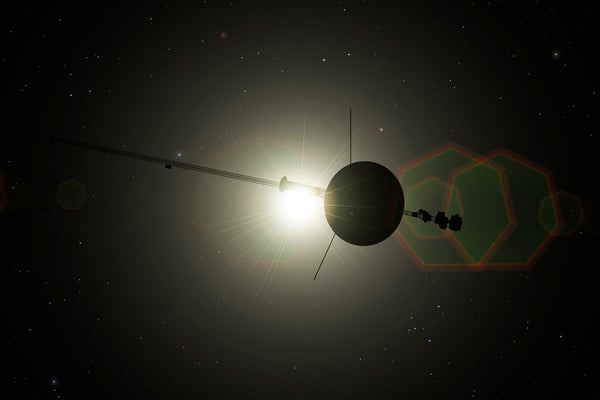
An artist's concept of NASA's Voyager 1, the space agency's venerable and farthest-flung interplanetary probe.
Mark Garlick/Science Photo Library/Getty Images
In the fall of last year, one of NASA’s most venerable spacecraft started beaming home nonsense. Its usual string of 1’s and 0’s—binary code that collectively told of its journey into the unknown—became suddenly unintelligible.
Some 15 billion miles from Earth, beyond the protective bubble blown by the sun and in interstellar space, Voyager 1 was in trouble.
“We’d gone from having a conversation with Voyager, with the 1’s and 0’s containing science data, to just a dial tone,” says Linda Spilker , Voyager project scientist at NASA’s Jet Propulsion Laboratory (JPL).
On supporting science journalism
If you're enjoying this article, consider supporting our award-winning journalism by subscribing . By purchasing a subscription you are helping to ensure the future of impactful stories about the discoveries and ideas shaping our world today.
Spilker joined JPL in 1977, the same year that NASA launched Voyager 1 and its twin, Voyager 2 , on what, in a way, was an endless odyssey: from Earth, to the outer solar system and ultimately to interstellar infinity . Today there are several billion people on Earth who have never taken a breath without the Voyagers in our sky, people who, like me, have only ever existed in a cosmos shared with these talkative twin spacecraft. But like people, spacecraft get old. They break down .
And all good things—and even great ones—must come to an end. After days, and weeks and then months of nothing but indecipherable binary babbling, Voyager 1’s earthbound stewards had to reckon with the idea that maybe, after more than 46 years, its time had at last run out.
The Voyager 1 team at JPL had traced the problem to the spacecraft’s Flight Data System, an onboard computer that parses and parcels engineering and science measurements for subsequent radio transmittal to Earth. One possibility was that a high-energy cosmic particle had struck Voyager 1 and caused a bit flip within the system’s memory — something that has happened more frequently as the craft navigates the hostile wilds of interstellar space. Normally, the team would simply ask the spacecraft for a memory readout, allowing its members to find and reset the errant bit.
“We’ve recovered from bit flips before. The problem this time is we don’t know where the bit flip is because we can’t see what the memory is,” says Suzanne Dodd , Voyager project manager at JPL, who, like Spilker, began her long career with work on the probes. “It’s the most serious issue we’ve had since I’ve been the project manager, and it’s scary because you lose communication with the spacecraft.”
Yesterday, the team announced a significant step in breaking through to Voyager 1. After months of stress and unsuccessful answers they have managed to decode at least a portion of the spacecraft’s gobbledygook, allowing them to (maybe) find a way to see what it has been trying to say.
“It’s an excellent development on Voyager,” says Joe Westlake , director of NASA’s heliophysics division, which oversees the mission.
In the time it will take you to read this story, Voyager 1 will have traversed approximately 10,000 miles of mostly empty space ; in the weeks it took me to report it, the probe traveled some 26 million miles. And since its communication first became garbled last November, the spacecraft has sailed another 10 light-minutes away from home. Voyager 1 and its twin are slipping away from us as surely as the passage of time itself. Sooner or later, these hallowed space-age icons will fall silent, becoming no more than distant memories.
And even among the space community, which of course loves all of its robotic explorers equally, the Voyagers are special. “They are incredibly important and much beloved spacecraft,” says Nicola Fox , NASA’s associate administrator for science. “Voyager 1 is a national treasure, along with Voyager 2 .”
As envisioned, the Voyager mission would exploit a once-in-175-year alignment of Jupiter, Saturn, Uranus and Neptune to slingshot through the solar system’s sparsely charted hinterlands. Legend has it that NASA’s administrator sold the project to President Richard Nixon by noting that the last time the planets were so favorably arranged, Thomas Jefferson was living in the White House. Outfitted with nuclear power sources, the Voyagers were built to last—in utter defiance of the adage that what must go up, must come down. Neither was ever intended to make planetfall again; instead they were bound for the stars. And now, nearly a half-century later, the pair have become the longest-lived and farthest-flung probes ever dispatched by humankind. (Voyager 1 is the front-runner, with its sibling trailing close behind.)
Spilker was straight out of college when she started working on the Voyagers, eager to see the outer solar system through their robotic eyes as they surfed the rare celestial alignment. “I had a telescope in third grade that I used to look at Jupiter and Saturn,” she says. “I wanted to get up really close and get a look at what these planets look like.”
Between 1979 and 1981, Voyager 1 and Voyager 2 zipped by the gas giants , returning stunning images of banded Jupiter and buttery Saturn and their bewildering collection of moons. Voyager 2 went on to scrutinize the ice giants: Uranus in 1986 and Neptune in 1989. These were the first and only times anyone had seen each of these bluish ringed worlds up close.
“They were small little pinpoints of light, and now you’re flying close,” Spilker says. “And you see the cliffs of Miranda”—a bizarre Uranian moon—“and Triton, with active geysers going off.” (Nobody had expected to see an active icy world in orbit around Neptune, and even now Voyager’s 35-year-old image is still the best we have of that strange little moon.)
When the Voyagers left the realm of the known planets, each followed a different path into darkness: Voyager 1 arced up and out of the plane of the solar system, and Voyager 2 looped downward. Spilker also followed her own path: she went to graduate school and earned her doctorate in planetary science using Voyager data—not knowing that several decades later, after leading NASA’s Cassini mission to Saturn, she’d again be part of the mission that started it all.
“The chance came to go back to Voyager,” she says. “And I said, ‘Of course. I’d love to go back.’”
In the interim, as the Voyagers sailed farther from their Earthly harbor, teams shut down many of the onboard instruments, including the cameras. But the pair kept studying the space that they alone were visiting. Their main job was now to characterize the heliosphere—the solar-system-encompassing, cosmic-ray-blocking bubble formed by our sun’s wind and magnetic field. They would document the alien mix of particles and fields that pervade near nothingness. And maybe, if they got lucky, the twins would each escape the protective solar caul entirely to be reborn as true interstellar wanderers.
In 2012 Voyager 1 transcended this boundary , known as the heliopause, where the sun’s influence wanes. Before that scientists could only guess at what lay beyond this barrier and could only model how it shielded Earth from the harshness of the void. Now Voyager 1 could tell us directly about the stuff between the stars. Voyager 2 followed in 2018 , and Fox—then the new chief of NASA’s heliophysics division—was in the midst of the action.
“You’re looking at the cosmic rays going up and the solar wind going down, and it was one of those ‘oh, my god, this is so exciting’ moments,” Fox recalls. “I think of the Voyagers as one mission,” she says. “We’re putting all the data together, but they’re the ones that are out there. They’re the brave spacecraft that have left the protective bubble of the heliosphere and are out exploring interstellar space. It’s hard not to be excited by them.”
This wasn’t the first time Voyager 1 had started speaking an unintelligible language. In 2022, when the probe suffered an earlier bout of garbled telemetry, JPL engineer Bob Rasmussen was shaken out of retirement. The lab wanted to know if Rasmussen, who’d joined the spacecraft’s systems engineering team in 1975, was willing to have a think about the situation.
“I’d been happily retired for a bit more than a year at that point, with plenty else to keep me busy,” Rasmussen says. “But I like solving puzzles, and this was a tough one that I just couldn’t pass up. Cracking it took a few months, but the puzzle stream hasn’t slowed since then.”
Afterward, he stayed on-call. So last November, when Voyager 1 again started transmitting nonsense, Rasmussen was ready for more problem-solving. He was joined by a hand-picked team of specialists, and together they dove into the details for getting the ailing spacecraft back in action.
The problems were at least three layers deep. First, it takes a long time to communicate with Voyager 1. Traveling at the speed of light, the radio signals used to command the spacecraft take 22.5 hours to travel 15 billion miles—and 22.5 hours to come back. Second, the Voyagers are not exactly modern technology.
“Most things don’t last 46 years. Your clock radio and toaster aren’t going to last 46 years,” says Dodd, who started on the Voyager project straight out of school, then worked on other missions and is now back on this one.
Plus, many of the people who built and developed the spacecraft in the 1970s aren’t around to explain the rationale behind the designs.
And third, unluckily enough, whatever had mangled the spacecraft had managed to take out Voyager 1’s ability to send meaningful communications. The team was in the dark, trying to find the invisible source of an error. (Imagine trying to revive a stalled desktop computer with a frozen screen: you can’t see your cursor, and your clicks risk causing more problems—except in this case each input carries a multiday lag and could damage a precious, misbehaving artifact that is more than 15 billion miles away.) Perhaps the most vexing part was the team’s knowledge that Voyager 1 was otherwise intact and functioning as it should be.
“It’s still doing what it’s supposed to be doing,” Westlake says. “It just can’t quite figure out how to send the correct message home.”
Rasmussen and his colleagues set out to understand the spacecraft in as much detail as possible. That meant poring over the original design schematics, now yellowed and pinned to various walls—an effort that resembled “a bit of an archaeology dig,” Dodd says—and studying how past teams had addressed anomalies. That was tricky, Dodd says, because even though the team members could figure out how engineers solved a problem, they couldn’t necessarily discern the rationale behind various solutions. They’d send commands to Voyager 1 about once a week—usually on Fridays—and by Sunday, they’d hear back from the spacecraft.
“There’s suspense after each cautious move, hope with each piece that falls into place, disappointment if our hunches are wrong,” Rasmussen says.
Progress was slow. And as time crept on, the team grew more concerned. But no one was giving up, at any level of leadership.
“I will rely on the Voyager team to say, ‘Hey, Nicky, we’ve done everything , ’” Fox says. “We wouldn’t make any decisions until we knew that every single thing had been tried and tried again because we really do want to get Voyager 1 back talking to us.”
And then, in early March, something changed. In response to a command, instead of beaming back absolute gibberish, the spacecraft sent a string of numbers that looked more familiar. It proved to be a Rosetta stone moment. Soon an unnamed engineer at NASA’s Deep Space Network—the globe-girdling array of radio dishes that relays information from Earth to spacecraft—had learned how to speak Voyager 1’s jumbled language.
After translating that vaguely familiar portion of the spacecraft’s transmission, the team could see that it contained a readout of the flight data system’s memory. Now they face new questions: Can they find and correct the source of the mutated code? Can they learn whether the spacecraft is sending useful science data? Can they restore Voyager 1’s lexicon to its original state—or will they need to continue speaking in the probe’s new postheliopause patois? “The hope is that we’ll get good science data back,” Westlake says. “Thinking about something that’s been a constant throughout my entire career going away is really tough to think about.”
But either by glitch or time’s slow decay of radioactive power sources, the Voyagers will, of course, eventually fade away. Each year they lose four watts of power, and they grow ever colder. “Whether it’s this particular anomaly that gets us or one downstream, or the spacecraft gets old enough and cold enough —one day you’ll go to look for it and it has just stopped working,” Spilker says.
Like silent ambassadors or wordless emissaries, the Voyagers will keep sailing outward, still carrying us with them into the stars—“sort of like a message a bottle,” Spilker says.
Besides their science payloads, a fraction of each spacecraft’s mass was devoted to casting a cosmic message into the interstellar ocean from a lonely island called Earth. Mounted to each probe is a golden record etched with grooves encoding a selection of sights and sounds from our small corner of space and time. An accompanying stylus is positioned to play the record from the beginning, alongside a pictographic and arithmetic instruction manual.
The records are gold because gold is stable for eons, and they’re records because that was the best way to store a lot of information in the 1970s. Should they ever be recovered and decoded, the message will tell the stories of we humans—at least as envisioned (and in some cases performed) by a small group of folks that included my parents ( the late astrophysicist Frank Drake and his surviving spouse Amahl Shakhashiri Drake), astronomer Carl Sagan, documentary producer Ann Druyan and science writer Timothy Ferris. Those stories are imperfect. They’re filled with lopsided optimism and scrubbed of references to war, famine, poverty and most any other Earthly failing—a deliberate decision to hide the defects of our broken world. I know this because my dad, the record’s technical director and a pioneer in the scientific quest to find cosmic civilizations, told me about the hard choices he’d made in selecting the photographs. And I know it because my mom, who recorded the message’s Arabic greeting (“Greetings to our friends in the stars. We wish that we will meet you someday”), helped, too.
For me, as the Voyagers travel through space , they’re not only helping us understand the cosmic context in which we exist; they’re also bearing a memento of my parents into the stars. These spacecraft—and their gleaming paean to Earth—will survive for billions of years. Long after our world, our sun and everything we hold dear becomes unrecognizable, the Voyagers will remain, resolutely speeding ever farther from a home that no longer exists and containing artifacts of a civilization that once was.
That’s why, over nearly half a century, the Voyagers and their interstellar tidings have come to be bigger than the already audacious mission they were designed to accomplish. Their reach is broader. And their inevitable silence will be profound.
“The thought that they’re out there on their own and you can no longer communicate with them—it’s traumatic,” Fox says. “It’s sad. It’s really sad.”

- The Contents
- The Making of
- Where Are They Now
- Frequently Asked Questions
- Q & A with Ed Stone
golden record
Where are they now.
- frequently asked questions
- Q&A with Ed Stone
Images on the Golden Record
The following is a listing of pictures electronically placed on the phonograph records which are carried onboard the Voyager 1 and 2 spacecraft. The contents of the record were selected for NASA by a committee chaired by Carl Sagan of Cornell University, et. al. Dr. Sagan and his associates assembled 115 images and a variety of natural sounds, such as those made by surf, wind and thunder, birds, whales, and other animals. To this they added musical selections from different cultures and eras, and spoken greetings from Earth-people in fifty-five languages, and printed messages from President Carter and U.N. Secretary General Waldheim. Each record is encased in a protective aluminum jacket, together with a cartridge and a needle. Instructions, in symbolic language, explain the origin of the spacecraft and indicate how the record is to be played. The 115 images are encoded in analog form. The remainder of the record is in audio, designed to be played at 16-2/3 revolutions per minute. It contains the spoken greetings, beginning with Akkadian, which was spoken in Sumer about six thousand years ago, and ending with Wu, a modern Chinese dialect. Following the section on the sounds of Earth, there is an eclectic 90-minute selection of music, including both Eastern and Western classics and a variety of ethnic music. Once the Voyager spacecraft leave the solar system, they will find themselves in empty space. It will be forty thousand years before they make a close approach to any other planetary system.
A list of images included on The Golden Record, but are not viewable, is listed at the bottom of this page .
Calibration circle
The calibration circle image is one of the pictures electronically placed on the phonograph records which are carried onboard the Voyager 1 and 2 spacecraft.
Credit: Jon Lomberg Please note that these images are copyright protected. Reproduction without permission of the copyright holder is prohibited.
Solar location map
The solar location map image is one of the pictures electronically placed on the phonograph records which are carried onboard the Voyager 1 and 2 spacecraft.
Credit: Frank Drake Please note that these images are copyright protected. Reproduction without permission of the copyright holder is prohibited.
Mathematical definitions
The mathematical definitions image is one of the pictures electronically placed on the phonograph records which are carried onboard the Voyager 1 and 2 spacecraft.
Physical unit definitions
The physical unit definitions image is one of the pictures electronically placed on the phonograph records which are carried onboard the Voyager 1 and 2 spacecraft.
Solar system parameters
The solar system parameters image is one of the pictures electronically placed on the phonograph records which are carried onboard the Voyager 1 and 2 spacecraft.
Solar spectrum
The solar spectrum image is one of the pictures electronically placed on the phonograph records which are carried onboard the Voyager 1 and 2 spacecraft.
Credit: National Astronomy and Ionosphere Center, Cornell University (NAIC) Please note that these images are copyright protected. Reproduction without permission of the copyright holder is prohibited.
The Mercury image is one of the pictures electronically placed on the phonograph records which are carried onboard the Voyager 1 and 2 spacecraft.
Credit: NASA Please note that these images are copyright protected. Reproduction without permission of the copyright holder is prohibited.
The Mars image is one of the pictures electronically placed on the phonograph records which are carried onboard the Voyager 1 and 2 spacecraft.
The Jupiter image is one of the pictures electronically placed on the phonograph records which are carried onboard the Voyager 1 and 2 spacecraft.
The Earth image is one of the pictures electronically placed on the phonograph records which are carried onboard the Voyager 1 and 2 spacecraft.
Egypt, Red Sea, Sinal Peninsula and the Nile
The Egypt, Red Sea, Sinal Peninsula and the Nile image is one of the pictures electronically placed on the phonograph records which are carried onboard the Voyager 1 and 2 spacecraft.
Chemical definitions
The chemical definitions image is one of the pictures electronically placed on the phonograph records which are carried onboard the Voyager 1 and 2 spacecraft.
DNA structure
The DNA structure image is one of the pictures electronically placed on the phonograph records which are carried onboard the Voyager 1 and 2 spacecraft.
DNA structure magnified, light hit
The DNA structure magnified, light hit image is one of the pictures electronically placed on the phonograph records which are carried onboard the Voyager 1 and 2 spacecraft.
Diagram of conception
The diagram of conception image is one of the pictures electronically placed on the phonograph records which are carried onboard the Voyager 1 and 2 spacecraft.
Fetus diagram
The fetus diagram image is one of the pictures electronically placed on the phonograph records which are carried onboard the Voyager 1 and 2 spacecraft.
Diagram of male and female
Nursing mother.
The nursing mother image is one of the pictures electronically placed on the phonograph records which are carried onboard the Voyager 1 and 2 spacecraft.
Credit UN/DPI Photo Please note that these images are copyright protected. Reproduction without permission of the copyright holder is prohibited.
Diagram of family ages
The diagram of family ages image is one of the pictures electronically placed on the phonograph records which are carried onboard the Voyager 1 and 2 spacecraft.
Diagram of continental drift
The diagram of continental drift image is one of the pictures electronically placed on the phonograph records which are carried onboard the Voyager 1 and 2 spacecraft.
Structure of Earth
The structure of Earth image is one of the pictures electronically placed on the phonograph records which are carried onboard the Voyager 1 and 2 spacecraft.
Heron Island (Great Barrier Reef of Australia)
The Heron Island (Great Barrier Reef of Australia) image is one of the pictures electronically placed on the phonograph records which are carried onboard the Voyager 1 and 2 spacecraft.
Credit: Dr. Jay M. Pasachoff Please note that these images are copyright protected. Reproduction without permission of the copyright holder is prohibited.

Diagram of vertebrate evolution
The diagram of vertebrate evolution image is one of the pictures electronically placed on the phonograph records which are carried onboard the Voyager 1 and 2 spacecraft.
Sketch of bushmen
The sketch of bushmen image is one of the pictures electronically placed on the phonograph records which are carried onboard the Voyager 1 and 2 spacecraft.
Man from Guatemala
The man from Guatemala image is one of the pictures electronically placed on the phonograph records which are carried onboard the Voyager 1 and 2 spacecraft.
Credit: UN/DPI Photo Please note that these images are copyright protected. Reproduction without permission of the copyright holder is prohibited.

Sprinters (Valeri Borzov of the U.S.S.R. in lead)
The sprinters (Valeri Borzov of the U.S.S.R. in lead) image is one of the pictures electronically placed on the phonograph records which are carried onboard the Voyager 1 and 2 spacecraft.
Credit: History of the Olympics, Picturepoint, London Please note that these images are copyright protected. Reproduction without permission of the copyright holder is prohibited.
The schoolroom image is one of the pictures electronically placed on the phonograph records which are carried onboard the Voyager 1 and 2 spacecraft.
Children with globe
The children with globe image is one of the pictures electronically placed on the phonograph records which are carried onboard the Voyager 1 and 2 spacecraft.
Supermarket
The supermarket image is one of the pictures electronically placed on the phonograph records which are carried onboard the Voyager 1 and 2 spacecraft.
Credit: National Astronomy and Ionosphere Center (NAIC) Please note that these images are copyright protected. Reproduction without permission of the copyright holder is prohibited.
Fishing boat with nets
The fishing boat with nets image is one of the pictures electronically placed on the phonograph records which are carried onboard the Voyager 1 and 2 spacecraft.
Demonstration of licking, eating and drinking
The demonstration of licking, eating and drinking image is one of the pictures electronically placed on the phonograph records which are carried onboard the Voyager 1 and 2 spacecraft.
House construction (African)
The house construction (African) image is one of the pictures electronically placed on the phonograph records which are carried onboard the Voyager 1 and 2 spacecraft.
House (Africa)
The house (Africa) image is one of the pictures electronically placed on the phonograph records which are carried onboard the Voyager 1 and 2 spacecraft.
Modern house (Cloudcroft, New Mexico)
The modern house (Cloudcroft, New Mexico) image is one of the pictures electronically placed on the phonograph records which are carried onboard the Voyager 1 and 2 spacecraft.
UN Building Day
The UN building day image is one of the pictures electronically placed on the phonograph records which are carried onboard the Voyager 1 and 2 spacecraft.
UN Building Night
The UN building night image is one of the pictures electronically placed on the phonograph records which are carried onboard the Voyager 1 and 2 spacecraft.
X-ray of hand
The X-ray of hand image is one of the pictures electronically placed on the phonograph records which are carried onboard the Voyager 1 and 2 spacecraft.
Woman with microscope
The woman with microscope image is one of the pictures electronically placed on the phonograph records which are carried onboard the Voyager 1 and 2 spacecraft.
Street scene
The street scene image is one of the pictures electronically placed on the phonograph records which are carried onboard the Voyager 1 and 2 spacecraft.
Rush hour traffic (Thailand)
Modern highway.
The modern highway image is one of the pictures electronically placed on the phonograph records which are carried onboard the Voyager 1 and 2 spacecraft.
Airplane in flight
The airplane in flight image is one of the pictures electronically placed on the phonograph records which are carried onboard the Voyager 1 and 2 spacecraft.
Radio telescope (Arecibo)
The radio telescope (Arecibo) image is one of the pictures electronically placed on the phonograph records which are carried onboard the Voyager 1 and 2 spacecraft.
Page of book (Newton, System of the World)
The page of book (Newton, System of the World) image is one of the pictures electronically placed on the phonograph records which are carried onboard the Voyager 1 and 2 spacecraft.
Astronaut in space
The astronaut in space image is one of the pictures electronically placed on the phonograph records which are carried onboard the Voyager 1 and 2 spacecraft.
Titan Centaur launch
The Titan Centaur launch image is one of the pictures electronically placed on the phonograph records which are carried onboard the Voyager 1 and 2 spacecraft.
Violin with music score (Cavatina)
The violin with music score (Cavatina) image is one of the pictures electronically placed on the phonograph records which are carried onboard the Voyager 1 and 2 spacecraft.
- Due to copyright restrictions, only a subset of the images on the Golden Record are displayed above.
- All of these images are copyright protected. Reproduction without permission of the copyright holder is prohibited.
List of additional images, not featured in gallery, but exist on The Golden Record:
- The Sun, Hale observatories
- Cells and cell division, Turtox/Cambosco
- Anatomy 1, World Book
- Anatomy 2, World Book
- Anatomy 3, World Book
- Anatomy 4, World Book
- Anatomy 5, World Book
- Anatomy 6, World Book
- Anatomy 7, World Book
- Anatomy 8, World Book
- Human sex organs, Sinauer Associates, Inc.
- Conception , Albert Bonniers; Forlag, Stockholm
- Fertilized ovum, Albert Bonniers; Forlag, Stockholm
- Fetus, Dr. Frank Allan
- Birth, Wayne Miller
- Father and daughter (Malaysia), David Harvey
- Group of children, Ruby Mera, UNICEF
- Family portrait, Nina Leen, Time, Inc.
- Seashore, Dick Smith
- Snake River and Grand Tetons, Ansel Adams
- Sand dunes, George Mobley
- Monument Valley, Shostal Associates, Inc.
- Forest scene with mushrooms, Bruce Dale
- Leaf, Arthur Herrick
- Fallen leaves, Jodi Cobb
- Snowflake over Sequoia, Josef Muench, R. Sisson
- Tree with daffodils, Gardens Winterthur, Winterthur Museum
- Flying insect with flowers, Borne on the Wind, Stephen Dalton
- Seashell (Xancidae), Harry N. Abrams, Inc.
- Dolphins, Thomas Nebbia
- School of fish, David Doubilet
- Tree toad, Dave Wickstrom
- Crocodile, Peter Beard
- Eagle, Donona, Taplinger Publishing Co.
- Waterhole, South African Tourist Corp.
- Jane Goodall and chimps, Vanne Morris-Goodall
- Bushmen hunters, R. Farbman, Time, Inc.
- Dancer from Bali, donna Grosvenor
- Andean girls, Joseph Scherschel
- Thailand craftsman, Dean conger
- Elephant, Peter Kunstadter
- Old man with beard and glasses (Turkey), Jonathon Blair
- Old man with dog and flowers, Bruce Baumann
- Mountain climber, Gaston Rebuffat
- Gymnast, Philip Leonian, Sports Illustrated
- Cotton harvest, Howell Walker
- Grape picker, David Moore
- Underwater scene with diver and fish, Jerry Greenberg
- Cooking fish, Cooking of Spain and Portugal, Time-Life Books
- Chinese dinner party, Time-Life Books
- Great Wall of China, H. Edward Kim
- Construction scene (Amish country), William Albert Allard
- House (New England), Robert Sisson
- House interior with artist and fire, Jim Amos
- Taj Mahal, David Carroll
- English city (Oxford), C.S. Lewis, Images of His World, William B. Eerdmans Publishing Co.
- Boston, Ted Spiegel
- Sydney Opera House, Mike Long
- Artisan with drill, Frank Hewlett
- Factory interior, Fred Ward
- Museum, David Cupp
- Golden Gate Bridge, Ansel Adams
- Train, Gordon Gahan
- Airport (Toronto), George Hunter
- Antarctic Expedition, Great Adventures with the National Geographic National Geographic
- Radio telescope (Westerbork, Netherlands), James Blair
- Sunset with birds, David Harvey
- String Quartet (Quartetto Italiano), Phillips Recordings
Create a free profile to get unlimited access to exclusive videos, sweepstakes, and more!
Why Did Voyager 1 Just Start Transmitting Gibberish from Deep Space?
Sometimes, when a spacecraft gets older, they don't communicate so good.

Harry Vanderspeigle ( Alan Tudyk ) is the titular extraterrestrial of Resident Alien (streaming now on Peacock ) and he’s all alone (aside from a couple notable exceptions) on our planet . In the Season 2 episode “ Radio Harry ,” he attempts to send a message to his people, by way of a transmitter we know as the interstellar rock ‘Oumuamua , telling them not to destroy humanity… for 50 years. We’ll take a few decades of buffer between now and extermination, but calling it off would be better!
How to Watch
Watch Resident Alien on SYFY and Peacock .
Speaking of weird signals to and from deep space, scientists at NASA recently began receiving a bunch of binary gibberish from Voyager 1 , and it isn’t clear why.
Voyager 1 Is Firing Off Nonsense, and It Won’t Stop
We haven’t intercepted a stray extraterrestrial message (probably) but something weird is going on; here’s what we know. Both Voyager spacecrafts have three onboard computers known as the flight data system (FDS).
RELATED: 'Oumuamua: Resident Alien's radio receiver isn't alien tech, but it is awesome!
The FDS is responsible for gathering information from its respective craft’s scientific instruments along with health data about the craft itself. Then it packages all of that information together and sends that package to another system called the telemetry modulation unit (TMU), which sends it back to Earth. For reasons unknown, something is going wrong with the handoff.
Rather than the usual science and spacecraft data it usually sends, the TMU has been transmitting a repeating string of ones and zeroes. That bit isn’t unusual, all information sent back by Voyager 1 and 2 comes in binary form, it’s just that the contents of the binary don’t make any sense. According to NASA , “after ruling out other possibilities, the Voyager team determined the source of the issue is the FDS.” No word on if those “other possibilities” included picking up some weird alien gibberish on an extraterrestrial radio band or something.

The team has attempted restarting the FDS by essentially turning it off and back on again – that fixes most technological problems here on Earth – but the problem persisted when the system was turned back on. The Voyager team continues to search for a solution, but it’s not surprising that the craft is showing its age.
Voyager 1 and 2 have been cutting through space at breakneck speed since 1977. They’ve visited the most distant parts of our solar system and traveled beyond it. They are the longest running spacecraft still in operation, in the history of space exploration, and they are increasingly held together with the cosmic equivalent of duct tape, chewing gum, and hope.
RELATED: The Life and Eventual Death of Voyager 1 and 2
Even the radioactive heart of Voyager is weakened and getting weaker every day . At Voyager 1’s great distance it can’t rely on energy from the Sun, so it uses the heat of decaying plutonium to power its systems. Even with a half-life of 88 years, the radioactive fuel has undergone significant decay over the last half-century and Voyager has lost a lot of its power output.
The Voyager team is pulling out all the stops to get our interstellar buddy back up and running, but it’s a tough job. The spacecraft was built by folks who have long-since retired and the current team can’t exactly ask for their help. There is also considerable light-speed lag between Voyager and the Earth.
From its interstellar vantage point, it takes nearly a day for light to cross the distance. So, every time the team tries something, it’s a 45-hour round-trip wait for the signal to get there and a response to get back.
With any luck, the Voyager team will be able to nurse our oldest and most distant space robot back to health soon. And if any aliens want to drop us a line, we’re not doing anything.
Maybe they want to hang out and watch Resident Alien, streaming now on Peacock . We have popcorn.
Resident Alien
Related stories.
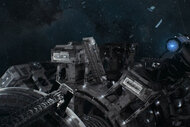
After Six Months in Limbo, Voyager 1 Is Fully Operational Again

Remembering Ed Stone, JPL Director and Cosmic Voyager

Dream Chaser Space Plane Prepares for First Flight to ISS
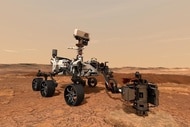
Everything to Know About the Mars 2020 Perseverance Rover Mission

Are Tornadoes Getting Worse? "Historic" 2024 Tornado Season Explained

'Pitch Black' and the Science of Enhanced Vision
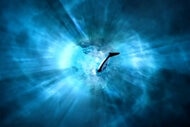
NASA Simulations Visualize Falling into a Black Hole

NASA is sending a Flying Dragonfly Rotorcraft to Explore Saturn's Moon Titan

How NASA Fixed Voyager 1 from 15 Billion Miles Away

NASA's ACS3 Spacecraft Will Soar with an 800-Square-Foot Solar Sail

NASA Prepares to Visit a Golden Asteroid Worth Up to $700 Quintillion

NASA Announces Update for Mars Sample Return Mission
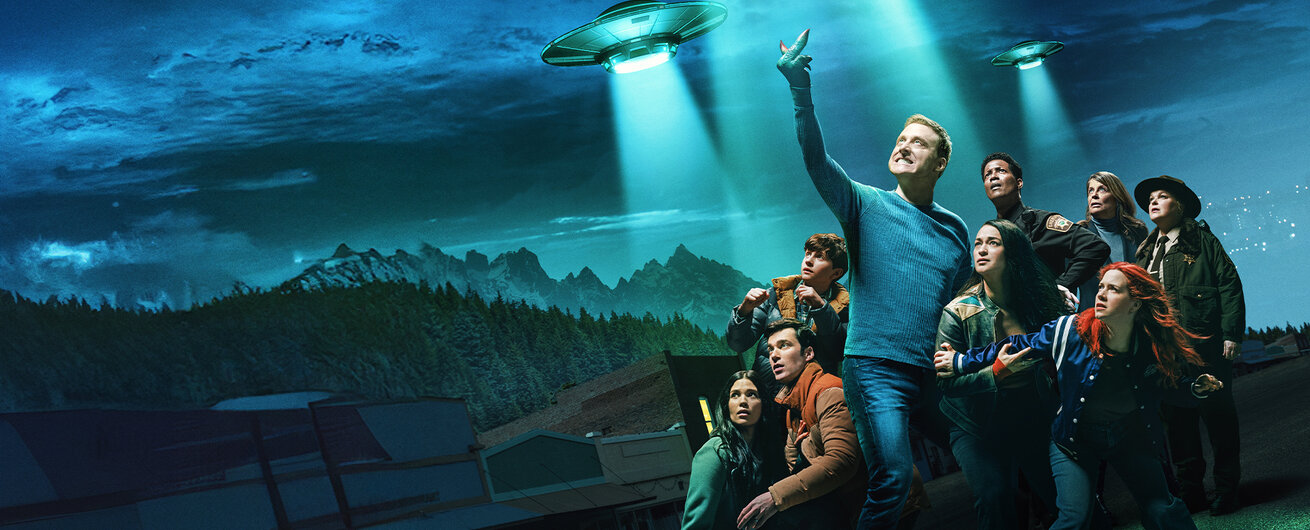
Latest Videos

Rescue Mission: Resident Alien S3 E8 Highlight

Hello Greys: Resident Alien S3 E8 Highlight

One of the Good Ones: Resident Alien S3 E8 Sneak Peek
Recommended for you.

Linda Hamilton on Resident Alien Role: "I'm Not the Funny Girl, I'm the Straight Man"

The Classic Twilight Zone Episode That Inspired Jordan Peele's Us

Resident Alien's Alan Tudyk on Harry's New Love Interest, Edi Patterson's Blue Avian
- Today's news
- Reviews and deals
- Climate change
- 2024 election
- Fall allergies
- Health news
- Mental health
- Sexual health
- Family health
- So mini ways
- Unapologetically
- Buying guides
Entertainment
- How to Watch
- My watchlist
- Stock market
- Biden economy
- Personal finance
- Stocks: most active
- Stocks: gainers
- Stocks: losers
- Trending tickers
- World indices
- US Treasury bonds
- Top mutual funds
- Highest open interest
- Highest implied volatility
- Currency converter
- Basic materials
- Communication services
- Consumer cyclical
- Consumer defensive
- Financial services
- Industrials
- Real estate
- Mutual funds
- Credit cards
- Balance transfer cards
- Cash back cards
- Rewards cards
- Travel cards
- Online checking
- High-yield savings
- Money market
- Home equity loan
- Personal loans
- Student loans
- Options pit
- Fantasy football
- Pro Pick 'Em
- College Pick 'Em
- Fantasy baseball
- Fantasy hockey
- Fantasy basketball
- Download the app
- Daily fantasy
- Scores and schedules
- GameChannel
- World Baseball Classic
- Premier League
- CONCACAF League
- Champions League
- Motorsports
- Horse racing
- Newsletters
New on Yahoo
- Privacy Dashboard
Scientists Are Dreaming Up a Sequel to Voyager's Gold Record, an Alien Message in a Bottle
Humanity wants so desperately to be besties with aliens. If they’re out there (and it seems impossible that they’re not) then we just want to be invited to the intergalactic party, already. SYFY’s own Resident Alien (streaming on Peacock ) presents one possible first contact scenario, but we’ve dreamed up plenty of others. And some of them we’ve even tried to make happen.
We have designed and constructed telescopes of every size and type, and astronomers use them to peer into the cosmos, understand our universe, and hopefully pick up an alien transmission or two. So far, the skies have been pretty quiet so we decided to send our own messages in the hope that an extraterrestrial intelligence might pick them up. Now, scientists are designing the next phase of cosmic shouts into the dark.
Voyager’s Golden Record, a Cosmic Message in a Bottle
NASA launched two spacecraft, both called Voyager , a few months apart in 1977. Their primary mission was to explore Jupiter and Saturn, a mission they completed beautifully. Afterward, they transitioned to an extended mission which included making a hard left turn for deep space. They’ve spent the last 45 years racing through space at tens of thousands of miles per hour and, as of November 2018, both spacecraft have passed out of the solar system and into interstellar space .
RELATED: Searching for Extraterrestrial Intelligence: The Science Behind Contact
In addition to their scientific missions, both Voyager crafts carry a 12-inch “golden record” (it’s actually made of copper and plated with gold) which holds information about our species and our planet. The contents of the gold record were selected by a committee chaired by the late Carl Sagan and endeavored to provide as complete and understandable a picture of humanity as possible.
Illustration of Voyager in deep space. Photo: NASA/JPL-Caltech
The record included audio recordings of various spoken languages and musical selections. It also included 115 images of things like our solar system, cell division, the structure of DNA, diagrams of the human form, and various images of people and nature. It also included a needle and symbolic instructions for how to play the record. The gold record is intended as a greeting, a way of saying to any aliens who happen to encounter it, “Hello, we are here, and this is who we are.”
We cast those two probes into space like a message in a bottle, hoping that one day it might be found by someone who can appreciate it. It might even get picked up by an intelligence that could respond, but probably not. The odds that either of the Voyager crafts are ever seen again, by anyone, are vanishingly small. If there is life out there in the cosmos and if we want to get in touch with them, we’re probably going to have to throw a lot more bottles into the cosmic ocean.
Making a Sequel to Voyager’s Gold Record
To that end, scientists are thinking up what the next version of the Voyager gold record might look like, and they’ve published their thought process in the journal Earth and Space Science . Because we won’t have any shared language with any potential recipients of our messages, we have to figure out ways to communicate information about ourselves in ways which might be more universally understood.
RELATED: NASA’s Racing Against the Clock to Keep Voyager Alive in Interstellar Space
We’re also likely communicating with someone not just across space, but also across time. If any of our messages are ever received, it will likely be in the distant future. Therefore, these messages should be conscious about the way we present ourselves and also be an accurate representation of our history and our current moment.
Both Voyager spacecraft carried a golden record containing information about our planet and our species. Photo: NASA/JPL-Caltech
The effort aims to build on the legacy of the golden record while also attempting to improve upon it. Like the golden record, scientists propose that future messages should include images, recorded sounds, and photos of humanity and nature. In addition, they propose that messages include mathematical messages, drawings, videos, and dictionaries. Moreover, messages should communicate not just where it came from but when it came from, and it should capture the breadth of humanity without being focused on any one culture or subset of cultures.
Scientists also note that messages should provide as much context as possible, so that any ETs who find it will have a fighting chance to solve the puzzle. As such, future messages will probably have a focus on video content which can best approximate our lived experience. With any luck, one of our bottles will wash up on some distant cosmic island and we’ll make contact, however fleeting, with some new friends.
In the meantime, hang out with our alien buddy in Resident Alien, streaming on Peacock .
Recommended Stories
Pornhub to leave five more states over age-verification laws.
Pornhub will block access to its site in five more states in the coming weeks.
Top RBs for fantasy football 2024, according to our experts
The Yahoo Fantasy football analysts reveal their first running back rankings for the 2024 NFL season.
Los Angeles Kings reveal new logo design inspired by Wayne Gretzky era
The Kings' new logo is heavily inspired by the '90s look sported by Gretzky in his peak, but features the 1967 crown and other slight updates.
NFL offseason power rankings: No. 30 Denver Broncos are a mess Sean Payton signed up for
The Broncos are still reeling from the Russell Wilson trade.
NFL teams in the worst shape for 2024 | The Exempt List
On today's episode, Charles McDonald is joined by Frank Schwab to predict how the worst six teams in the NFL will fare in 2024.
Raiders unveil new way to lose $20,000 in Las Vegas: A tailgating 'party shack'
Just split it with 20 friends and it's $1,000 each!
Ravens reveal their one-game-only 'Purple Rising' helmet, which should be worn full time
These helmets are too cool to keep locked up for 51 weeks a year.
Chicago Bulls trade Alex Caruso to Oklahoma City Thunder, receive Josh Giddey in return
The trade marks a homecoming for Caruso, who started his career with the franchise, while sending Giddey to Chicago as a young playmaker.
Tiger Woods' son Charlie wins USGA qualifier to play in U.S. Junior Amateur championship
Charlie, 15, is the same age his father was when Tiger won the first of this three straight U.S. Junior Amateur championships in 1991.
Dealer says he sold LeBron James a Bugatti. LeBron replies: 'LIARS!'
A California high-end car dealership “congratulated” NBA legend LeBron James for all to see on Instagram about his "purchase." LeBron James begs to differ.
NASA engineers finally fix Voyager 1 spacecraft — from 15 billion miles away
The Voyager I spacecraft went haywire last year, but NASA engineers say they have finally fixed its data transmission systems and are receiving usable signals from all four science instruments.
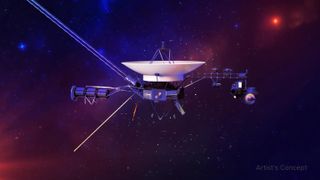
NASA's Voyager 1 interstellar probe is finally returning usable data from all four of its science instruments, scientists say.
The fix comes seven months after the probe went off the rails and started talking gibberish, NASA representatives said in a statement on June 13.
The spacecraft went haywire in November 2023 and began sending nonsensical signals following a technical issue with one of its three onboard computers. Engineers partially resolved the glitch in April after sending a command to Voyager 1's flight data subsystem (FDS), which is responsible for neatly packaging science data before the spacecraft transmits them to Earth. The command prompted Voyager 1 to send back its first readable message in four months, enabling engineers to locate the problem.
After locating the glitch on a single computer chip, the team then devised a workaround to alter the FDS' code remotely — from billions of miles away — and begin restoring Voyager's instruments to working order.
Related: Planet Nine: Is the search for this elusive world nearly over?
Two of Voyager 1's four science instruments resumed returning usable data in May , and after some further tinkering, all four are now back in business, the agency said. The instruments are responsible for gathering information about plasma waves, magnetic fields and particles in interstellar space.
While Voyager 1's data systems are back up and running, further work is needed to fully restore the spacecraft, according to the statement. Engineers still need to resynchronize timekeeping software that enables all three onboard computers to execute commands at the same time, for example. The team will also perform maintenance on the probe's digital tape recorder, which stores data for the plasma wave instrument.
Sign up for the Live Science daily newsletter now
Get the world’s most fascinating discoveries delivered straight to your inbox.
— James Webb telescope discovers most distant supernova ever seen
— How long would it take to reach Planet 9, if we ever find it?
— 8 strange objects that could be hiding in the outer solar system
Voyager 1 is zooming through interstellar space more than 15 billion miles (24 billion kilometers) from Earth. Interstellar space is the region outside the heliosphere — the protective bubble created by the sun's magnetic fields and winds. The spacecraft is so far away, engineers have to wait 22.5 hours for their commands to reach it and another 22.5 hours for the response.
Voyager 1 and its twin probe, Voyager 2, have been cruising through space for nearly 47 years. They are NASA's longest-running spacecraft and the most distant human-made objects in existence.
Sascha is a U.K.-based trainee staff writer at Live Science. She holds a bachelor’s degree in biology from the University of Southampton in England and a master’s degree in science communication from Imperial College London. Her work has appeared in The Guardian and the health website Zoe. Besides writing, she enjoys playing tennis, bread-making and browsing second-hand shops for hidden gems.
Astronauts stranded in space due to multiple issues with Boeing's Starliner — and the window for a return flight is closing
Vera C. Rubin Observatory: The groundbreaking mission to make a 10-year, time-lapse movie of the universe
James Webb telescope spots a dozen newborn stars spewing gas in the same direction — and nobody is sure why
Most Popular
- 2 Strawberry Moon 2024: See summer's first full moon rise a day after solstice
- 3 Y chromosome is evolving faster than the X, primate study reveals
- 4 Ming dynasty shipwrecks hide a treasure trove of artifacts in the South China Sea, excavation reveals
- 5 Astronomers discover the 1st-ever merging galaxy cores at cosmic dawn
- 2 Astronauts stranded in space due to multiple issues with Boeing's Starliner — and the window for a return flight is closing
- 3 'Immortal' stars at the Milky Way's center may have found an endless energy source, study suggests
- 4 Gates of Hell: Turkmenistan's methane-fueled fire pit that has been burning since 1971
- 5 Giant river system that existed 40 million years ago discovered deep below Antarctic ice
After months of silence, Voyager 2 sends a gleeful message back to Earth
11.5 billion miles away from Earth, the intrepid spacecraft finally got a call from NASA after months of radio silence.

After months of the silent treatment , NASA has finally reconnected with one of its longest running missions.
The Voyager 2 spacecraft has been roaming the cosmos for more than 40 years, all the while staying in touch with a diligent team of engineers in ground control. But in March of this year, NASA hung up the line.
The space agency left the spacecraft to spend a lonely few months in space in order to upgrade their communication system. Flying some 11.5 billion miles away from Earth, Voyager 2 was left to its own devices in mid-March.
But on October 29, NASA briefly reconnected. And, thankfully, Voyager 2 gleefully answered the call.
Voyager 2 is a vital scientific mission and one of the furthest manmade objects from Earth — so far it has left the Solar System entirely. To communicate with the spacecraft, NASA relies on a system called the Deep Space Network (DSN) antennas .
The system came to be when NASA launched its first ever satellite, Explorer 1, in 1958. The DSN is used to communicate with an average of 30 spacecraft every day. It runs 24 hours a day, 365 days a year, and is spread out across three sites in the United States, Australia, and Spain.
The DSN is reliable. But it is also more than 70 years old.
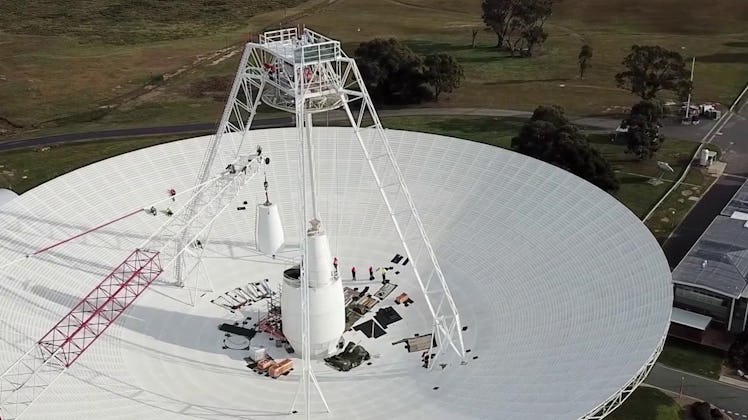
Engineers got to work, upgrading the radio antenna Deep Space Station 43 in Canberra, Australia.
As the space agency gears up for a slew of new missions to the Moon and Mars , all launching in the next few years, the DSN is due for a much needed upgrade.
NASA started this crucial work with an antenna dubbed Dss43. It is 230-feet-wide, about the size of a 20-story building, and is located in Canberra, Australia.
Dss43 has been operational for 48 years — and some of its parts, including the transmitter used to communicate with Voyager 2, had never been upgraded.
But to safeguard the antenna's next four decades of service (hopefully), NASA has upgraded Dss43's heating and cooling equipment, power supply equipment, and other electronics.
Friday's brief call to Voyager 2 was the first test of the new equipment.
"What makes this task unique is that we're doing work at all levels of the antenna, from the pedestal at ground level all the way up to the feedcones at the center of the dish that extend above the rim," Brad Arnold, the DSN project manager at NASA's Jet Propulsion Lab in Southern California, said in a statement . "This test communication with Voyager 2 definitely tells us that things are on track with the work we're doing."
In the test, NASA's mission operators sent a series of commands to Voyager 2 for the first time since the radio antenna went offline in mid-March, and the spacecraft confirmed that it had received the signal and went on to execute the commands.
Unfortunately for the lonely craft, NASA is going to hang up the line again. Dss43 will not be fully back online until February, 2021. Voyager 2 will have to face a few more months alone. That's worrying for the mission's engineers on the ground, too.
"Having the antenna down for one year is not an ideal situation for Voyager or for many other NASA missions," Philip Baldwin, operations manager for NASA's Space Communications and Navigation (SCaN) Program, said in statement. "The agency made the decision to conduct these upgrades to ensure that the antenna can continue to be used for current and future missions. For an antenna that is almost 50 years old, it's better to be proactive than reactive with critical maintenance."
In January 2020, Voyager 2 suffered a slight glitch , when its software shut down one of its science instruments unexpectedly. NASA’s ground team of engineers worked round the clock to get the spacecraft up and running to its normal operations once again by sending commands up to the craft. Because of its distance, each command took about 17 hours to reach Voyager 2. With no communication line, any fault with the craft that occurs during the downtime would be missed.
Voyager 2 is on a joint mission with another craft, Voyager 1, to provide scientists with a unique view of our own Solar System, looking at it from the outside in.
Both spacecraft began their journey in 1977, and the speedier twin Voyager 1 made the jump into interstellar space in 2011, before it was followed by Voyager 2 in 2018 .
Initial results from the mission published in the journal Nature in November, 2019 describe how the craft have given scientists a pretty good idea of the shape of the heliosphere — the bubble that the Sun forms around itself and separates it from outer space.
The mission still has about five years left in its designated timeline.
- Space Science

After Months of Glitches and Gradual Fixes, Voyager 1 Is Fully Operational Once Again
A fter a technical malfunction late last year rendered all of its subsequent readings as useless , NASA’s Voyager 1 spacecraft—which has spent nearly a half-century in space—has been brought back online and is once again fully functioning.
“The spacecraft has resumed gathering information about interstellar space,” NASA said in a press release .
Launched in 1977 and drifting some 15 billion miles away from Earth, on the outer reaches of our solar system, the satellite is both one of the world’s oldest-tenured crafts and currently the most distant—making its recovery from what was once presumed a dismal prognosis nothing short of miraculous.
Last November, the satellite began transmitting unintelligible strings of data, as opposed to the binary code it is supposed to send, back to NASA’s scientists. Initial efforts to diagnose and fix the problem were tedious. New commands took nearly a full day, 22.5 hours, to reach Voyager 1, and responses took an equal amount of time.
“Finding solutions to challenges the probes encounter often entails consulting original, decades-old documents written by engineers who didn’t anticipate the issues that are arising today,” Miles Hatfield wrote in a December NASA press release . “As a result, it takes time for the team to understand how a new command will affect the spacecraft’s operations in order to avoid unintended consequences.”
Waiting 45 hours between individual troubleshooting efforts was tedious. But incremental gains were made, and after five months of steady trial and error, the team found that Voyager 1’s problem lay in its flight data subsystem (FDS), which packages earthbound data. They pinpointed one faulty chip in particular, and were able to engineer a work-around.
In April, they enjoyed a breakthrough: a health and status report that indicated the satellite was still capable of lucid communication.
“Today was a great day for Voyager 1,” Linda Spilker, a Voyager project scientist at NASA’s Jet Propulsion Laboratory (JPL), said in a statement from that weekend, CNN’s Ashley Strickland reported. “We’re back in communication with the spacecraft. And we look forward to getting science data back.”
The team didn’t need to wait long. In late May, two of the spacecraft’s four scientific instruments began sending usable scientific data once again: the “bunny-eared” plasma wave subsystem , which protrudes 30 feet off the spacecraft and measures electron density, and the magnetometer instrument , which measures and analyzes the magnetic fields of Jupiter, Saturn, Uranus and Neptune.
“NASA has previously estimated that the nuclear-powered generators on Voyager 1 and Voyager 2 were likely to die around 2025,” the New York Times’ Orlando Mayorquín reports.
But, if they can survive until 2027, both spacecraft will reach their 50th anniversary.
Voyagers 1 and 2 are NASA’s only spacecraft to have explored outside of the sun’s heliosphere. Over the decades, they have explored the solar system’s gas giant planets and 48 moons . They also carry the Voyager Golden Records , intended to share sounds and images of Earth with alien civilizations.
“That's here. That's home. That's us. On it everyone you love, everyone you know, everyone you ever heard of, every human being who ever was, lived out their lives,” astronomer Carl Sagan famously said in 1990 on the day Voyager 1 took the iconic “pale blue dot” image of Earth at a distance of 3.7 billion miles from the sun.


IMAGES
VIDEO
COMMENTS
Background. The Voyager 1 probe is currently the farthest human-made object from Earth.Both Voyager 1 and Voyager 2 have reached interstellar space, the region between stars where the galactic plasma is present. Like their predecessors Pioneer 10 and 11, which featured a simple plaque, both Voyager 1 and Voyager 2 were launched by NASA with a message aboard—a kind of time capsule, intended ...
The Voyager message is carried by a phonograph record, a 12-inch gold-plated copper disk containing sounds and images selected to portray the diversity of life and culture on Earth. Launched in 1977, both Voyager spacecraft began a historic journey and each carried a unique 'time capsule' along with them. Click to learn more.
Transcript. Forty years ago, NASA launched two Voyager spacecraft into deep space. Onboard both were gold discs with music, greetings and sounds from Earth — a message to aliens. Ann Druyan, the ...
Voyager's Golden Record. The Voyager record asks more of whoever finds it but gives more information in return. These phonographs, attached to the spacecraft bus, feature a cover illustration and over 90 minutes of audio on the reverse side. The cover illustration features the same image of hydrogen and the same pulsar map as found on the ...
Greetings to the Universe in 55 Different Languages. A golden phonograph record was attached to each of the Voyager spacecraft that were launched almost 25 years ago. One of the purposes was to send a message to extraterrestrials who might find the spacecraft as the spacecraft journeyed through interstellar space.
The Voyager Golden Record contains 116 images and a variety of sounds. The items for the record, which is carried on both the Voyager 1 and Voyager 2 spacecraft, were selected for NASA by a committee chaired by Carl Sagan of Cornell University.Included are natural sounds (including some made by animals), musical selections from different cultures and eras, spoken greetings in 59 languages ...
The Message Voyager 1 Carries for Alien Civilizations The "Golden Record" aboard the interstellar spacecraft is a time capsule of humanity, sent from 1977 to the distant future. By Megan Garber
To test whether aliens would be able to hear them, scientists ran the messages by animals, as proxies. SCOTT SIMON, HOST: Forty years ago this month, NASA launched a Voyager spacecraft to explore ...
When Voyager 1 and Voyager 2 launched into space in 1977, their mission was to explore the outer solar system, and over the following decade, they did so admirably.. With an 8-track tape memory ...
When Voyager 1 and 2 launched into space in 1977, each carried on board a golden record — an interstellar collection of human sounds and images meant to represent life on Earth for any alien ...
Electroplated onto the record's cover is an ultra-pure source of uranium-238 with a radioactivity of about 0.00026 microcuries. The steady decay of the uranium source into its daughter isotopes makes it a kind of radioactive clock. Half of the uranium-238 will decay in 4.51 billion years. Thus, by examining this two-centimeter diameter area on ...
On September 5, 1977 the Voyager 1 space probe launched from Earth. Nearly 40 years and some 20.5 billion km travelled later (and counting!), the Voyager 1 remains the farthest ever spacecraft from Earth as well as the farthest ever man-made object.. In the event the probe is ever found by intelligent life forms from other planetary systems, a Golden Record containing sounds and images ...
Voyager's Golden Record, a Cosmic Message in a Bottle. NASA launched two spacecraft, both called Voyager, a few months apart in 1977. Their primary mission was to explore Jupiter and Saturn, a mission they completed beautifully. Afterward, they transitioned to an extended mission which included making a hard left turn for deep space.
" Both of the Voyager spacecraft, launched in 1977, carry copies of these records. Earlier, Sagan had been involved in crafting a message placed on Pioneer 10 and 11, the first NASA missions that would leave our solar system. The plans for messages to travel with the Voyager missions were set out on a much grander scale.
The plaque attached to Pioneer 10. The Pioneer plaques are a pair of gold - anodized aluminum plaques that were placed on board the 1972 Pioneer 10 and 1973 Pioneer 11 spacecraft, featuring a pictorial message, in case either Pioneer 10 or 11 is intercepted by intelligent extraterrestrial life. The plaques show the nude figures of a human male ...
First, it takes a long time to communicate with Voyager 1. Traveling at the speed of light, the radio signals used to command the spacecraft take 22.5 hours to travel 15 billion miles—and 22.5 ...
In 2010, a message written in Klingon, a language used by fictional aliens in the "Star Trek" universe, invited real aliens to attend a Klingon opera in Holland. We haven't relied only on radio to ...
Images on the Golden Record. The following is a listing of pictures electronically placed on the phonograph records which are carried onboard the Voyager 1 and 2 spacecraft. The contents of the record were selected for NASA by a committee chaired by Carl Sagan of Cornell University, et. al. Dr. Sagan and his associates assembled 115 images and ...
Speaking of weird signals to and from deep space, scientists at NASA recently began receiving a bunch of binary gibberish from Voyager 1, and it isn't clear why. Voyager 1 Is Firing Off Nonsense, and It Won't Stop. We haven't intercepted a stray extraterrestrial message (probably) but something weird is going on; here's what we know.
Voyager's Golden Record, a Cosmic Message in a Bottle. NASA launched two spacecraft, both called Voyager, a few months apart in 1977. Their primary mission was to explore Jupiter and Saturn, a ...
The command prompted Voyager 1 to send back its first readable message in four months, enabling engineers to locate the problem. ... Voyager 1 and its twin probe, Voyager 2, have been cruising ...
Voyager 1 is a space probe launched by NASA on September 5, 1977, as part of the Voyager program to study the outer Solar System and the interstellar space beyond the Sun's heliosphere. It was launched 16 days after its twin, Voyager 2.
Flying some 11.5 billion miles away from Earth, Voyager 2 was left to its own devices in mid-March. But on October 29, NASA briefly reconnected. And, thankfully, Voyager 2 gleefully answered the call.
A photo of Jupiter's Great Red Spot, taken by Voyager 1 on March 1, 1979. For decades, the spacecraft has provided NASA with imagery and data about our solar system's gas giants, moons, particles ...